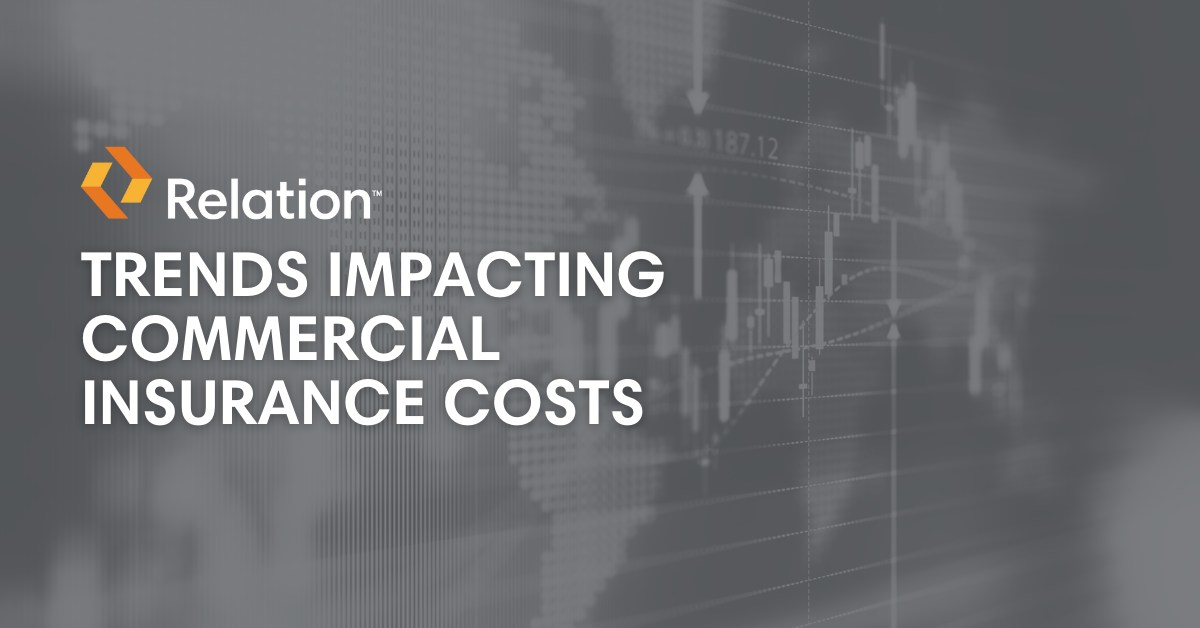
Risk & Insurance
Trends Impacting Commercial Insurance Costs

Recent market developments have demonstrated signs of an improving commercial insurance landscape. Yet, industry experts asserted that ongoing headwinds facing certain lines of coverage will continue to generate hardened conditions overall, therefore driving up premiums. As such, it’s essential for businesses to be aware of the following market trends and how they may impact coverage costs:
Labor shortages trends impacting commercial insurance costs
The last few years have seen widespread labor shortages, largely stemming from employees adjusting their job priorities in response to the COVID-19 pandemic. Such shortages have motivated some businesses to hire less experienced workers and place extra demands on existing employees to fill labor gaps; however, doing so can heighten liability exposures and increase the risk of workplace accidents, paving the way for rate jumps in several commercial insurance segments.
Supply chain disruptions trends impacting commercial insurance costs
Continued pandemic-related challenges, global transportation breakdowns and commercial driver shortages have slowed shipment and delivery times for many high-demand goods, creating supply chain issues for businesses across industry lines. These issues have led to considerable disruptions, prolonged recovery times, compounded claim expenses and elevated premiums in multiple commercial insurance segments.
Inflation issues trends impacting commercial insurance costs
In recent years, labor shortages and supply chain issues have fueled rising inflation concerns throughout the commercial insurance space, as evidenced by a surging consumer price index (CPI). Altogether, the elevated CPI has driven up claim costs, inflated total loss expenses and prompted rate hikes for various lines of coverage.
Recession risks trends impacting commercial insurance costs
Some economic experts have forecasted that the United States is headed toward a recession in the near future. During a recession, businesses usually experience decreased sales and profits, which may cause them to reduce their workforces and cut their spending to help maintain financial stability. Although having fewer employees could minimize occupational injuries and associated claims, limited funding for risk management and cybersecurity initiatives may create further liability exposures, making busi- nesses more vulnerable to increased losses and higher commercial insurance premiums.
Social inflation trends impacting commercial insurance costs
Social inflation refers to societal trends that push insurance costs above the overall inflation rate. Current drivers of social inflation include increased third-party litigation funding and the rise of anti-corporate culture. Amid these trends, businesses have been held more ac- countable for their wrongdoings, sometimes resulting in nuclear verdicts (jury awards exceeding $10 million). Social inflation has been a main factor in rising claim severity and rate jumps across many commercial insurance segments.
Extreme weather events impacting commercial insurance costs
Natural disasters (e.g., hurricanes, tornadoes, hailstorms and wildfires) continue to make headlines as they become increasingly devastating and costly. Making matters worse, these events aren’t limited to one geographic area; they impact establishments across the United States. Natural disasters have left businesses with significant repair and re- placement expenses, exacerbating losses and resulting in higher commercial insurance premiums.
During these challenging times, we are here to provide much-needed market expertise. Contact us today for additional risk management guidance and insurance solutions.
This article is not intended to be exhaustive nor should any discussion or opinions be construed as legal advice. Readers should contact legal counsel or an insurance professional at Relation Insurance for appropriate advice.
©2023 Zywave,Inc. All rights reserved.


